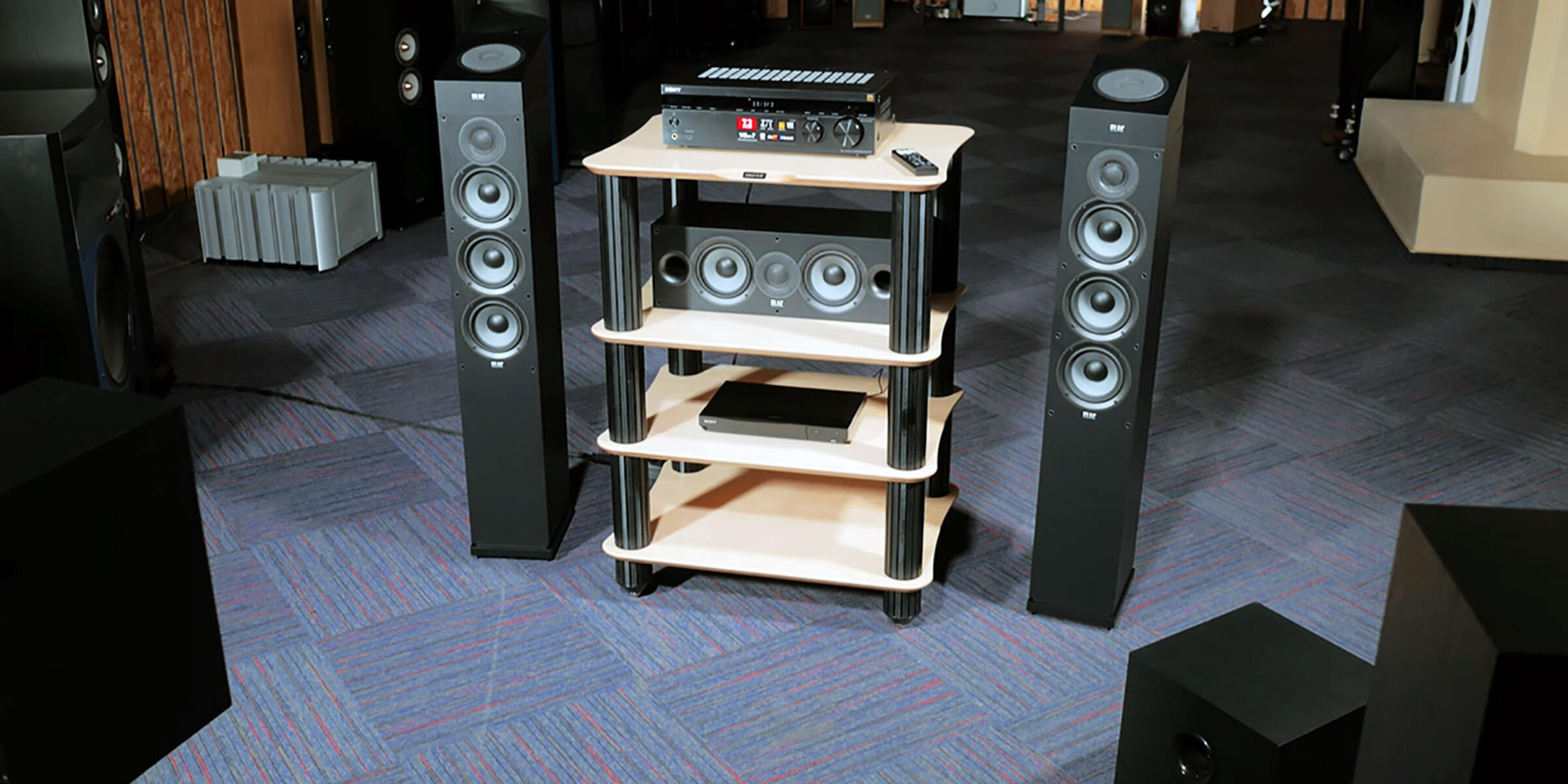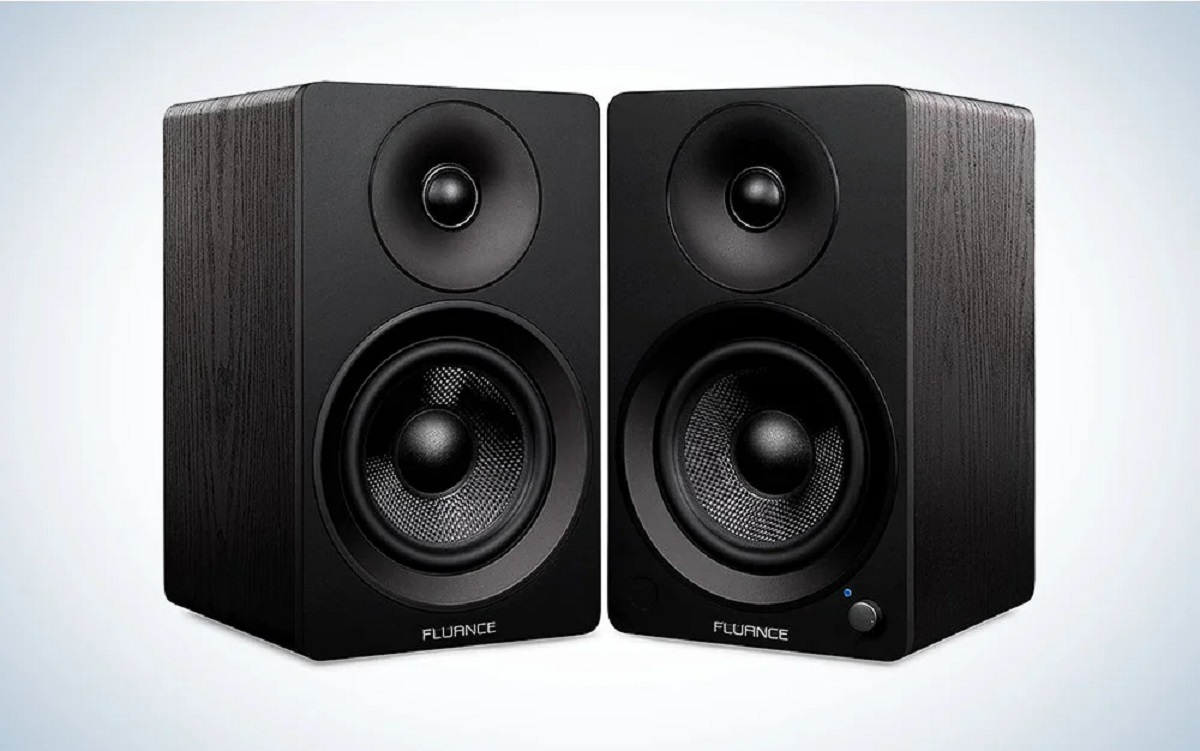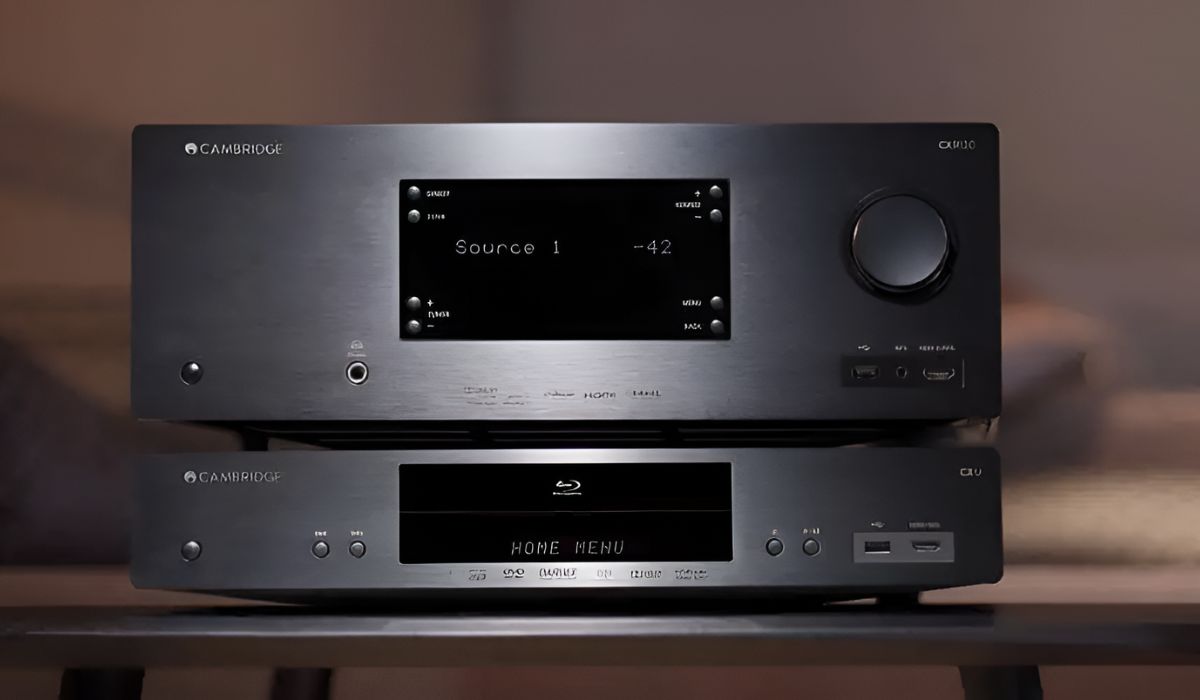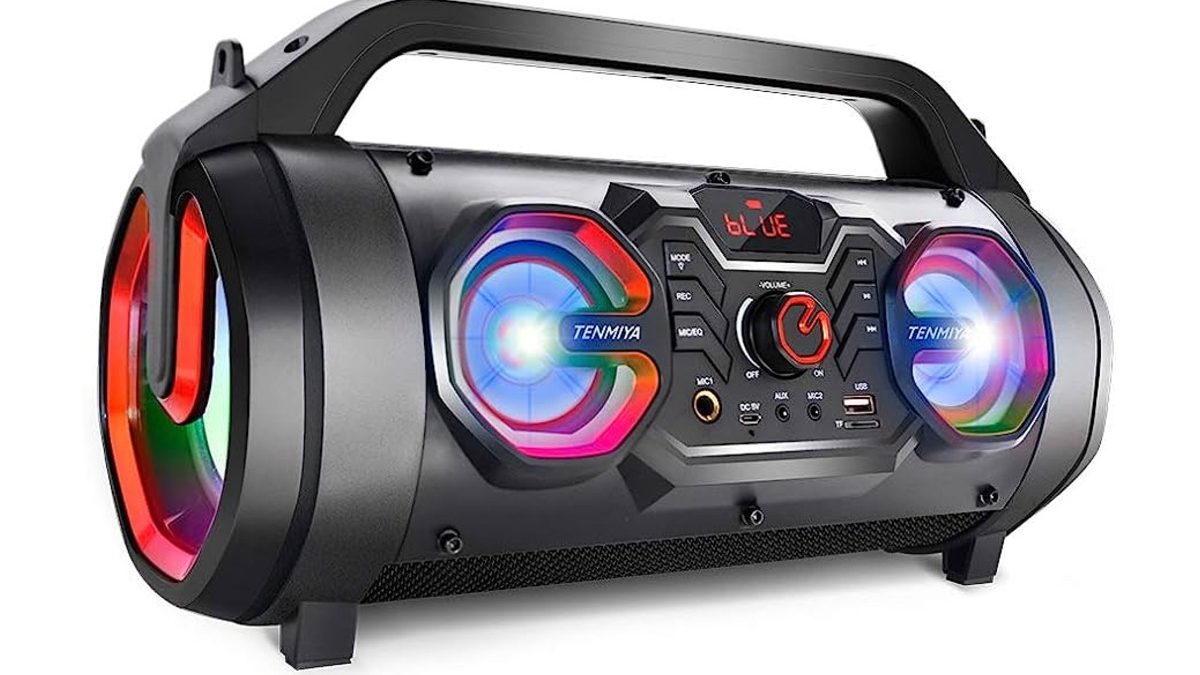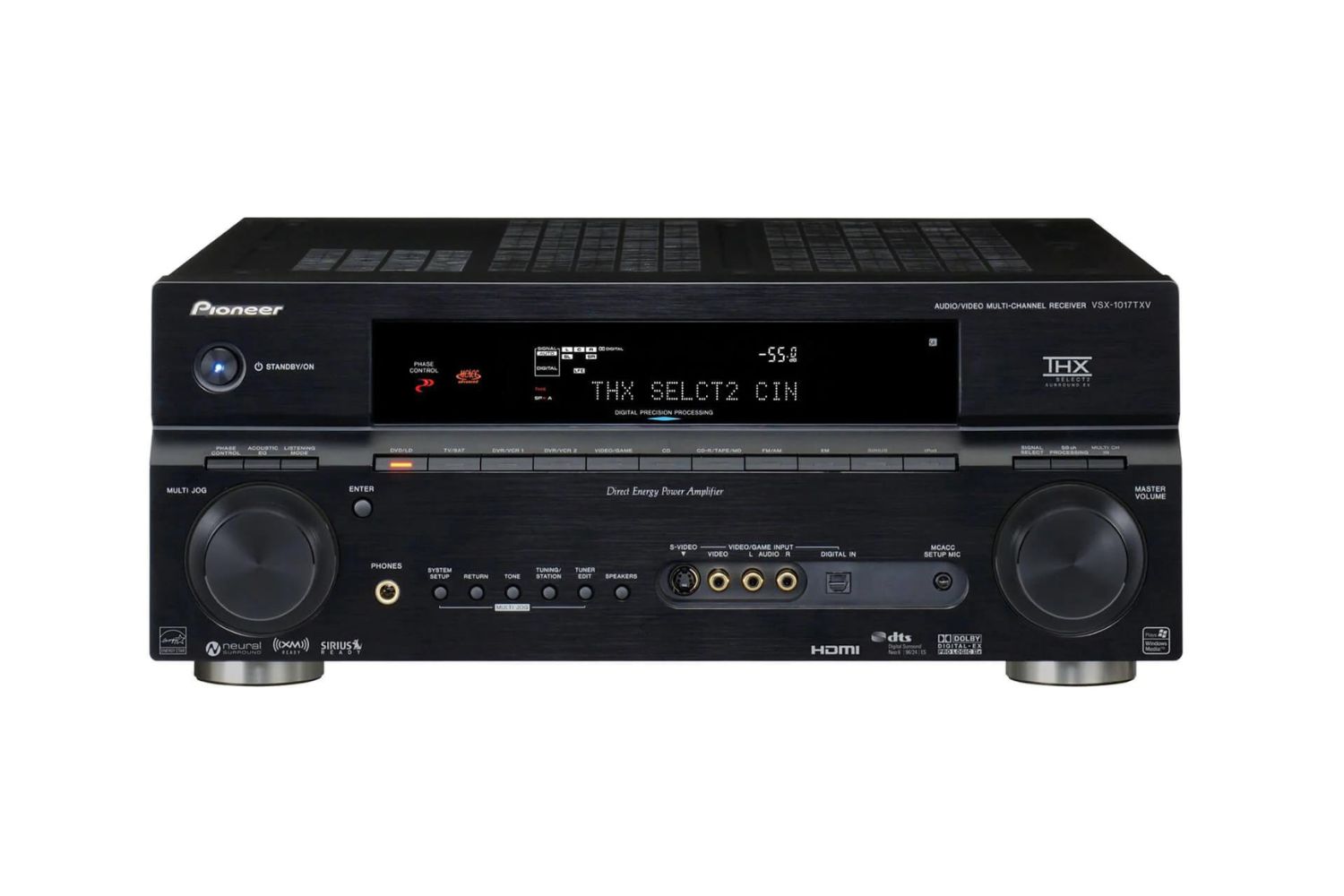Introduction
Welcome to the exciting world of radio surround sound systems! Whether you’re a music enthusiast, a movie lover, or a gaming junkie, a quality surround sound system can elevate your audio experience to a whole new level. Imagine immersing yourself in crisp, clear sound that surrounds you from every direction, bringing movies, music, and games to life right in your own living room. In this article, we will guide you through the essential components and considerations when setting up a radio surround sound system, ensuring that you have everything you need for an incredible audio experience.
Before we delve into the specifics, let’s briefly explain what a radio surround sound system is. Unlike conventional stereo systems that only have two speakers, a surround sound system typically consists of multiple speakers strategically placed around the room, creating a three-dimensional sound field. This immersive audio technology allows you to hear sounds coming from different directions, providing a more realistic and engaging experience.
Now that you have a basic understanding of what a radio surround sound system is, it’s time to explore the key components that you’ll need to assemble your own setup. From selecting the right receiver to choosing the best speakers and optimizing room acoustics, we’ll cover everything you need to know to create a truly immersive audio environment in your home. So, sit back, relax, and let’s embark on this exciting journey together!
Understanding Radio Surround Sound Systems
Before diving into the technicalities of setting up a radio surround sound system, it’s essential to understand the foundational concepts behind this audio technology. By grasping the basics, you’ll be better equipped to make informed decisions when it comes to selecting the right equipment for your setup.
At the core of a radio surround sound system is the ability to reproduce audio in a way that simulates a three-dimensional sound field. This is achieved by having multiple speakers strategically placed around the room, each responsible for producing specific audio channels. Common surround sound setups include the 5.1 and 7.1 configurations, which consist of five or seven speakers respectively and a subwoofer for bass enhancement.
In a 5.1 surround sound system, the speakers are divided into six channels: the center, left and right front, left and right surround, and the subwoofer. The center speaker primarily handles dialogues and is positioned either above or below the display screen. The front left and right speakers deliver the main audio elements, while the surround speakers create the ambience and surround effects. The subwoofer is responsible for reproducing low-frequency sounds, adding depth and impact to explosions and other bass-heavy effects.
In a 7.1 surround sound system, two additional speakers, known as rear surrounds, are added to the setup. These rear surround speakers enhance the surround effect by providing a more enveloping audio experience, particularly for larger rooms.
Now that you have a clearer understanding of the components involved in a radio surround sound system, it’s time to explore how each of these components plays a crucial role in delivering an immersive audio experience. From the receiver that serves as the central hub for your system to the speakers that bring the sound to life, we’ll discuss these elements in the upcoming sections.
Choosing the Right Receiver
The receiver is the heart and brain of your radio surround sound system. It acts as the central hub that connects all your audio sources, such as your TV, media players, gaming consoles, and even streaming devices. When choosing a receiver, there are several factors to consider:
1. Audio Formats: Ensure that the receiver you choose supports the audio formats you intend to use. Common formats include Dolby Digital, DTS, and Dolby Atmos. These formats enable enhanced surround sound capabilities and a more immersive audio experience.
2. Channels and Outputs: Consider the number of channels the receiver can handle. For a 5.1 setup, you’ll need a receiver capable of handling at least five channels plus a subwoofer output. If you’re planning for a 7.1 setup, look for a receiver with seven channels plus a subwoofer output, and additional outputs for rear surrounds if needed.
3. Power Output: The power output of the receiver determines how loud and clear the audio will be. Higher wattage typically results in a more robust and dynamic sound. Make sure the receiver has sufficient power to drive your speakers effectively.
4. Connectivity Options: Check the receiver’s connectivity options to ensure compatibility with your audio sources. HDMI inputs and outputs are essential for transmitting high-quality audio signals, while optical and coaxial inputs are useful for connecting older devices.
5. Room Calibration: Some receivers come with automatic room calibration features. These systems use a microphone to analyze your room’s acoustics and optimize the audio output accordingly. Consider receivers with this feature to ensure optimal sound quality in your listening space.
6. User Interface and Remote Control: A user-friendly interface and intuitive remote control can make operating your surround sound system a breeze. Look for receivers with clear and easy-to-navigate interfaces, as well as convenient remote control options.
By considering these factors, you’ll be well on your way to selecting a receiver that meets your audio needs and enhances your overall surround sound experience. Remember to research different brands and read customer reviews to ensure you’re choosing a reliable and high-quality receiver.
Selecting the Best Speakers
When it comes to creating an immersive audio experience with your radio surround sound system, selecting the right speakers is crucial. Here are some key factors to consider when choosing speakers:
1. Speaker Types: There are several types of speakers to choose from, including floorstanding speakers, bookshelf speakers, center channel speakers, surround speakers, and subwoofers. Each speaker type serves a specific purpose and contributes to the overall surround sound experience. Consider the size of your room and your audio preferences to determine the appropriate combination of speakers for your setup.
2. Speaker Sensitivity and Power Handling: Speaker sensitivity measures how efficiently a speaker converts power into sound. Higher sensitivity ratings require less power to produce the same volume, making them ideal for receivers with lower power outputs. Additionally, ensure that the speakers can handle the power output of your receiver without distortion or damage.
3. Frequency Response: The frequency response of speakers indicates the range of frequencies they can reproduce. Look for speakers that have a broad frequency response and can reproduce both low and high-frequency sounds accurately, allowing you to experience the full range of audio content.
4. Timbre Matching: To ensure a seamless and cohesive surround sound experience, it’s important to select speakers from the same brand or series that provide timbre matching. This means that all the speakers in your setup will have a similar tonal balance, resulting in a consistent and immersive soundstage.
5. Room Size and Placement: Consider the size of your room and the placement options available when selecting speakers. Larger rooms may benefit from more powerful speakers or multiple subwoofers to fill the space adequately. Additionally, think about where you will position your speakers to achieve optimal sound dispersion and imaging.
6. Budget Considerations: While it’s tempting to go for the highest-priced speakers, it’s important to set a budget and find a balance between quality and affordability. There are excellent options available in various price ranges, so research different brands and read reviews to find speakers that offer the best value for your budget.
By considering these factors and conducting thorough research, you’ll be able to choose speakers that deliver impressive audio performance and complement your radio surround sound system. Remember, the goal is to create a cohesive and immersive audio experience that brings your movies, music, and games to life.
The Importance of Placement and Room Acoustics
When setting up your radio surround sound system, the placement of speakers and consideration of room acoustics are crucial factors that can greatly impact the overall audio experience. Here’s why placement and room acoustics are essential:
1. Speaker Placement: The placement of speakers influences sound dispersion, imaging, and the overall balance of audio in your listening space. Follow these general guidelines:
- Front speakers: Place them at ear level, equidistant from the center of your seating area.
- Center speaker: Position it above or below the display screen, directing sound towards the listening area.
- Surround speakers: Place them slightly above ear level, on either side or slightly behind the listening area, creating a surround sound effect.
- Subwoofer: Experiment with different locations to find the spot that provides the best bass response in your room.
2. Room Acoustics: The acoustic properties of your room can significantly impact the sound quality of your surround system. Consider the following:
- Sound Reflection: Reflective surfaces such as bare walls, hardwood floors, and large windows can cause sound to bounce around the room, leading to echo or unwanted reflections. Incorporate acoustic treatments or use rugs, curtains, and furniture to reduce reflections.
- Bass Traps: Low-frequency sounds tend to accumulate in corners, resulting in boomy or uneven bass response. Use bass traps or strategically place the subwoofer to minimize these issues.
- Furniture and Room Layout: The placement of furniture and the overall room layout can affect sound propagation and clarity. Experiment with different arrangements to optimize sound quality.
3. Speaker Calibration: Many receivers and sound systems offer automatic speaker calibration systems. These systems use a microphone to analyze the room’s acoustics and adjust speaker settings accordingly. Follow the manufacturer’s instructions to optimize the audio output based on your room’s specific characteristics.
By paying attention to speaker placement and considering the impact of room acoustics, you can achieve a well-balanced and immersive audio experience. Take the time to experiment with different configurations and fine-tune the settings to find the optimal balance of sound in your listening space.
Wiring and Cable Management
While it may not be as exciting as selecting speakers or fine-tuning room acoustics, proper wiring and cable management are essential for a clean and efficient radio surround sound system setup. Here are some tips to help you navigate the world of wiring:
- Plan Your Wiring: Before you begin connecting your speakers and components, plan out the routing of cables. Determine the optimal path for each cable, considering the distance, accessibility, and potential obstacles.
- Use Quality Cables: Invest in quality speaker wires and cables to ensure optimal audio signal transmission. Look for cables with the appropriate gauge and connectors for your system. For longer cable runs, consider thicker gauge cables to minimize signal loss.
- Ensure Proper Connections: Take your time to make secure and proper connections between your speakers, receiver, and other audio components. Double-check that all positive and negative terminals are correctly connected to maintain the intended audio performance.
- Label Your Cables: To simplify troubleshooting and future adjustments, label your cables at both ends. Use labels or color coding to easily identify each cable’s purpose and connection point.
- Manage Cable Length: Avoid excess cable length, as it can lead to clutter and potentially affect audio performance. Measure the required length for each cable and use cable ties or clips to secure any excess length neatly.
- Consider Concealing Cables: If possible, hide or conceal your cables to maintain a clean and organized appearance. Wall-mounted grommets, cable management raceways, and even furniture and rugs can help conceal cables and minimize visual distractions.
- Avoid Interference: Keep your audio cables away from power cables and other potential sources of interference, such as Wi-Fi routers or fluorescent lights. Interference can introduce unwanted noise or signal degradation into your audio system.
By following these wiring and cable management tips, you can ensure a tidy and well-organized setup that enhances the functionality and aesthetics of your radio surround sound system. Take your time during the installation process, paying attention to detail, and enjoy the benefits of a clutter-free and high-performing audio system.
Remote Control Options
Controlling your radio surround sound system should be convenient and seamless. To achieve this, consider the different remote control options available. Here are some common options to enhance your user experience:
- Universal Remotes: A universal remote consolidates control of multiple devices into one, eliminating the need for multiple remotes. Ensure that the universal remote is compatible with your audio components and offers programming options to integrate all necessary functions.
- Smartphone Apps: Many audio manufacturers offer smartphone apps that allow you to control your surround sound system through your mobile device. Check if your receiver or other components have a dedicated app that provides easy and intuitive control of your system.
- Voice Control: Voice control options, such as Amazon Alexa or Google Assistant compatibility, provide a hands-free way of controlling your audio system. With compatible devices, you can simply give voice commands to adjust volume, switch inputs, or play specific content.
- Remote Extenders: If your audio components are hidden away or located in a different room, consider remote extenders. These systems use infrared (IR) or radio frequency (RF) technology to transmit commands from your remote to the hidden components, allowing you to control them even when not in direct line of sight.
- Home Automation Integration: If you have a home automation system, explore options to integrate your surround sound system into the automation setup. This enables control of your audio system alongside other smart devices using a central control system or voice commands.
- Wireless or Bluetooth Remotes: Some audio systems offer wireless or Bluetooth remotes as alternatives to standard infrared remotes. These remotes provide greater flexibility and convenience, allowing you to control your system without needing a direct line of sight.
Consider your preferences and the level of control you desire when selecting the remote control option that best suits your needs. Compatibility with your surround sound system and ease of use should be key factors in your decision-making process.
Remember, the goal is to make controlling your audio system effortless, allowing you to focus on enjoying your favorite movies, music, and games without interruptions or inconvenience.
Additional Accessories and Features to Consider
While selecting the right receiver, speakers, and remote control options are essential for a successful radio surround sound system setup, there are additional accessories and features that can further enhance your audio experience. Consider these options:
- Subwoofer Isolation: Subwoofer isolation pads or platforms can help minimize vibrations and improve bass response. These accessories isolate the subwoofer from the floor, reducing resonance and providing cleaner, more accurate bass.
- Soundproofing Materials: If you want to minimize sound leakage or external noise interference, consider incorporating soundproofing materials into your room. Acoustic panels, heavy curtains, and carpets can absorb sound reflections and enhance audio clarity.
- Wireless Streaming: If you prefer a clutter-free setup, explore wireless streaming options. Bluetooth receivers or Wi-Fi-enabled audio systems allow you to stream music wirelessly from your smartphone, tablet, or computer directly to your surround sound system.
- Media Streaming Devices: Consider media streaming devices, such as Apple TV, Roku, or Amazon Fire TV, to access a wide range of streaming services and content. These devices provide convenient access to online music, movies, and TV shows, enhancing your entertainment options.
- Gaming Console Integration: If you’re a gaming enthusiast, make sure your surround sound system is compatible with popular gaming consoles. This allows you to immerse yourself in the audio experience while gaming, enhancing the intensity and level of engagement.
- Upgraded Audio Cables: For those seeking enhanced audio quality, upgrading to higher-quality audio cables can make a noticeable difference. Consider using premium speaker cables, interconnects, or optical cables to maximize the fidelity and clarity of your audio signals.
- Multi-Room Audio: If you want to extend your audio setup to multiple rooms, explore multi-room audio options. Some receivers offer multi-zone capabilities, allowing you to play different audio sources in different areas of your home simultaneously.
These additional accessories and features can personalize and enhance your audio experience according to your preferences and requirements. Consider your specific needs, budget, and desired outcomes when exploring these options, and don’t hesitate to consult with audio professionals for expert advice.
Conclusion
Congratulations! You have now gained a comprehensive understanding of the key components and considerations when setting up a radio surround sound system. By choosing the right receiver, selecting the best speakers, optimizing placement and room acoustics, managing wiring and cables, exploring remote control options, and considering additional accessories and features, you can create an immersive audio experience in your home.
Remember, the receiver serves as the central hub, connecting all your audio sources and providing the necessary processing capabilities. Select speakers that match your room size, audio preferences, and budget, ensuring a well-balanced and dynamic surround sound experience. Take the time to properly place your speakers and consider room acoustics to optimize sound dispersion and minimize unwanted reflections.
Proper wiring and cable management are crucial for a clean and efficient setup. Plan your cable routing, use quality cables, and ensure secure connections to maximize audio performance. Explore various remote control options to find the most convenient and user-friendly method to operate your system.
Finally, consider additional accessories and features that can further enhance your audio experience, such as subwoofer isolation, soundproofing materials, wireless streaming, gaming console integration, and multi-room audio options.
With the knowledge gained from this guide, you can confidently assemble and configure your radio surround sound system, immersing yourself in a world of incredible audio. So, get ready to enjoy high-quality sound that brings your favorite media to life, whether it’s a cinematic blockbuster, a music concert, or an intense gaming session. Happy listening!







